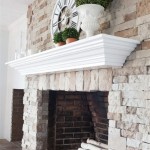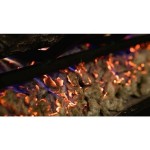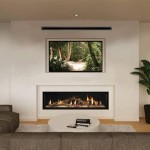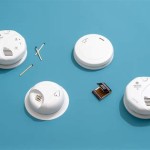Stone Fireplace Surround: A Striking Kitchen Feature
Integrating a stone fireplace surround into a kitchen design presents a unique blend of rustic charm and modern functionality. Traditionally associated with living spaces, a fireplace in the kitchen introduces warmth, visual interest, and a focal point often lacking in contemporary culinary environments. The material choice, design considerations, and installation practices are crucial for a successful incorporation of this architectural element.
The rationale behind including a fireplace surround in a kitchen stems from the desire to create a more inviting and convivial atmosphere. Many modern kitchens, while efficient and technologically advanced, can sometimes feel sterile and lacking in personality. A stone fireplace provides a natural counterpoint to stainless steel appliances and sleek cabinetry, imbuing the space with a sense of history and comfort. Furthermore, a functioning fireplace can offer supplemental heating during colder months, enhancing the kitchen's overall appeal and usability.
The choice of stone plays a significant role in the overall aesthetic. Different stone types possess distinct characteristics in terms of color, texture, and pattern. For example, fieldstone offers a rugged, natural appearance, while slate provides a smoother, more contemporary look. The selection process should consider the existing kitchen design, color palette, and desired ambiance. Moreover, the stone's durability and resistance to heat and moisture are practical considerations, especially given the kitchen's inherent conditions.
Material Selection and Considerations
Choosing the appropriate stone for a kitchen fireplace surround involves evaluating several factors beyond aesthetics. Natural stone options like granite, marble, limestone, and fieldstone each have unique properties. Granite, recognized for its durability and resistance to stains and heat, is a practical choice for a kitchen environment. Marble, admired for its veining and elegant appearance, requires more careful maintenance due to its porous nature and susceptibility to etching from acidic substances. Limestone provides a softer, more rustic look but also necessitates sealing to prevent staining. Fieldstone, with its irregular shapes and natural variations, adds a distinctly rustic character, but its uneven surface may require more elaborate installation techniques.
Manufactured stone, also known as cultured stone, presents an alternative to natural stone. This option offers several advantages, including lighter weight, consistent color and texture, and lower cost. Manufactured stone is made from a mixture of cement, aggregates, and pigments, molded to replicate the appearance of natural stone. It is generally easier to install and requires less structural support than natural stone, making it a suitable choice for renovations or situations where weight is a concern. However, manufactured stone may not possess the same level of authenticity or long-term durability as natural stone.
Regardless of the stone type chosen, it's vital to ensure it is appropriately sealed to protect it from moisture and staining, which are common concerns in a kitchen setting. Regular cleaning with a pH-neutral cleaner further helps maintain the stone's appearance and longevity.
Design Integration and Placement
The placement of the fireplace surround within the kitchen must be carefully considered to maximize its visual impact and functionality. A common approach is to integrate the fireplace into a feature wall, creating a focal point that draws the eye and anchors the space. Alternatively, the fireplace can be incorporated into a kitchen island, providing a unique and functional element for cooking and entertaining. The dimensions of the fireplace should be proportional to the size of the kitchen; a fireplace that is too large can overwhelm the space, while one that is too small may be visually insignificant.
The design style of the fireplace surround should complement the overall kitchen aesthetic. In a traditional kitchen, a more ornate fireplace surround with intricate detailing and corbels may be appropriate. In a contemporary kitchen, a simpler, more minimalist design with clean lines and a smooth stone surface may be preferred. The choice of mantel, hearth, and surround materials should also be cohesive and consistent with the overall design scheme.
Ventilation is a critical aspect of fireplace design, particularly in a kitchen. A properly functioning chimney or vent ensures that smoke and fumes are effectively expelled from the space, preventing indoor air pollution. Building codes and regulations often dictate specific requirements for fireplace ventilation, and it's essential to consult with a qualified professional to ensure compliance. Furthermore, the proximity of the fireplace to flammable materials, such as cabinetry and countertops, must be carefully evaluated to prevent fire hazards. Adequate clearances and fire-resistant materials should be used to protect surrounding surfaces.
Installation and Structural Considerations
Installing a stone fireplace surround is a complex undertaking that requires specialized skills and knowledge. The weight of natural stone necessitates careful planning and structural reinforcement. The floor and supporting walls must be able to bear the additional load, and in some cases, structural modifications may be required. A qualified contractor or structural engineer can assess the existing structure and recommend appropriate measures to ensure stability.
The installation process typically involves preparing the substrate, applying a mortar bed, and carefully setting the stones in place. The stones must be properly aligned and leveled to create a visually appealing and structurally sound surround. Grouting is used to fill the joints between the stones, providing a watertight seal and enhancing the overall appearance. The type of grout used should be compatible with the stone type and resistant to staining and moisture.
Building codes and regulations often govern the installation of fireplaces and stone surrounds. These codes typically address issues such as fire safety, ventilation, and structural integrity. It's essential to obtain the necessary permits and inspections to ensure compliance with all applicable regulations. Hiring a licensed and experienced contractor who is familiar with local building codes is crucial for a safe and successful installation. Regular maintenance, including chimney cleaning and inspection, is also necessary to ensure the continued safe operation of the fireplace.

Natural Stacked Stone Veneer Fireplace Ideas

Stone Veneer Interior Design Living Room Kitchen Bedroom Ideas More Buechel

Hot Trends Give Your Kitchen A Sizzling Makeover With Fireplace Decoist

Natural Stacked Stone Veneer Fireplace Ideas

Hot Trends Give Your Kitchen A Sizzling Makeover With Fireplace Decoist

Stone Fireplace Mantels Craftsmanship In Chicago Suburbs Factory Plaza

9 Heartwarming Kitchens With Fireplaces Art Of The Home

Hot Trends Give Your Kitchen A Sizzling Makeover With Fireplace Decoist

72 Small Kitchen Ideas With Big Style That Do More Less Rustic Farmhouse Fireplace Brick Makeover Remodel

Stone Fireplaces








